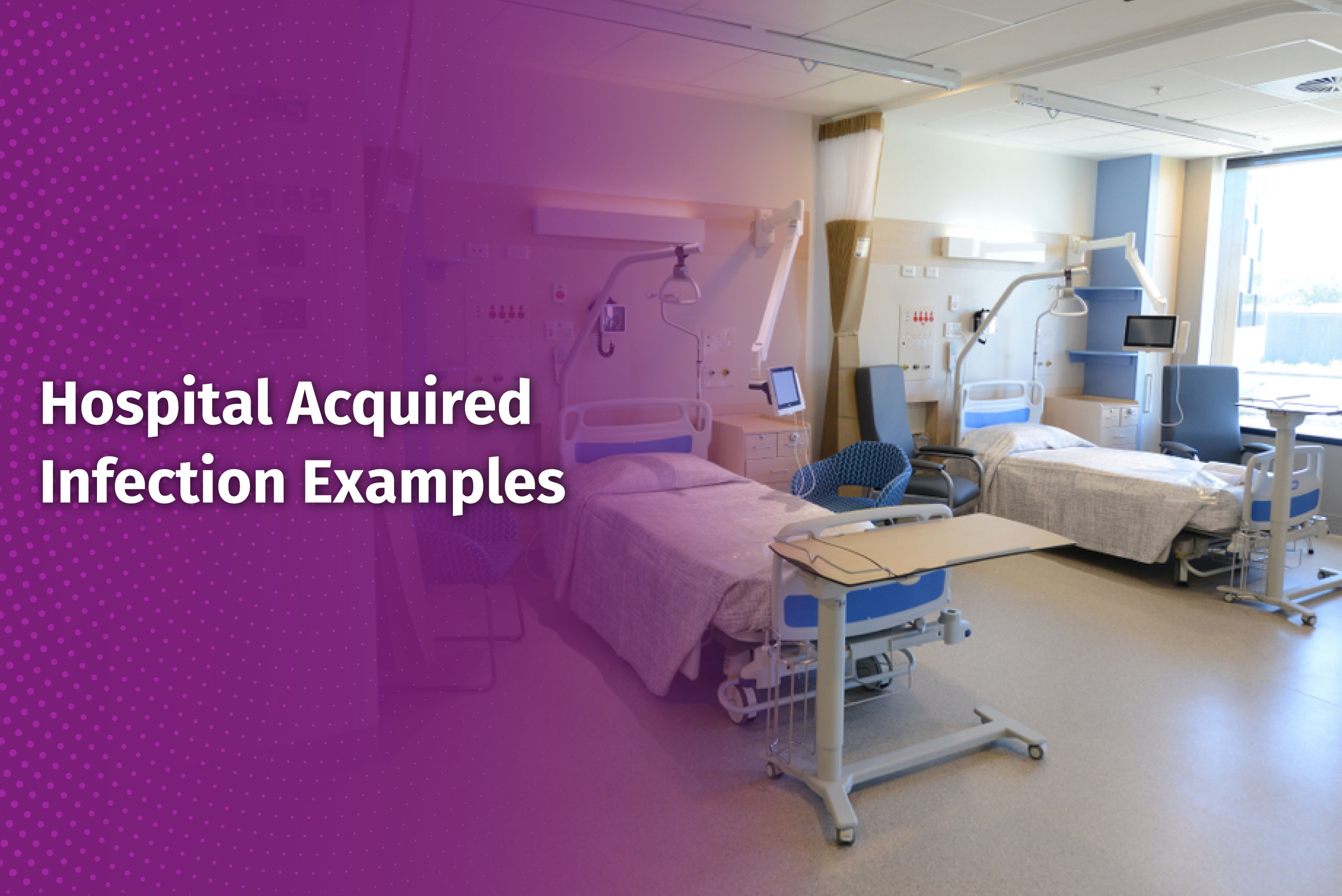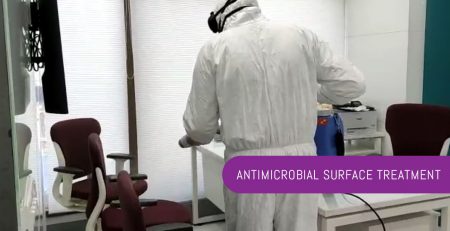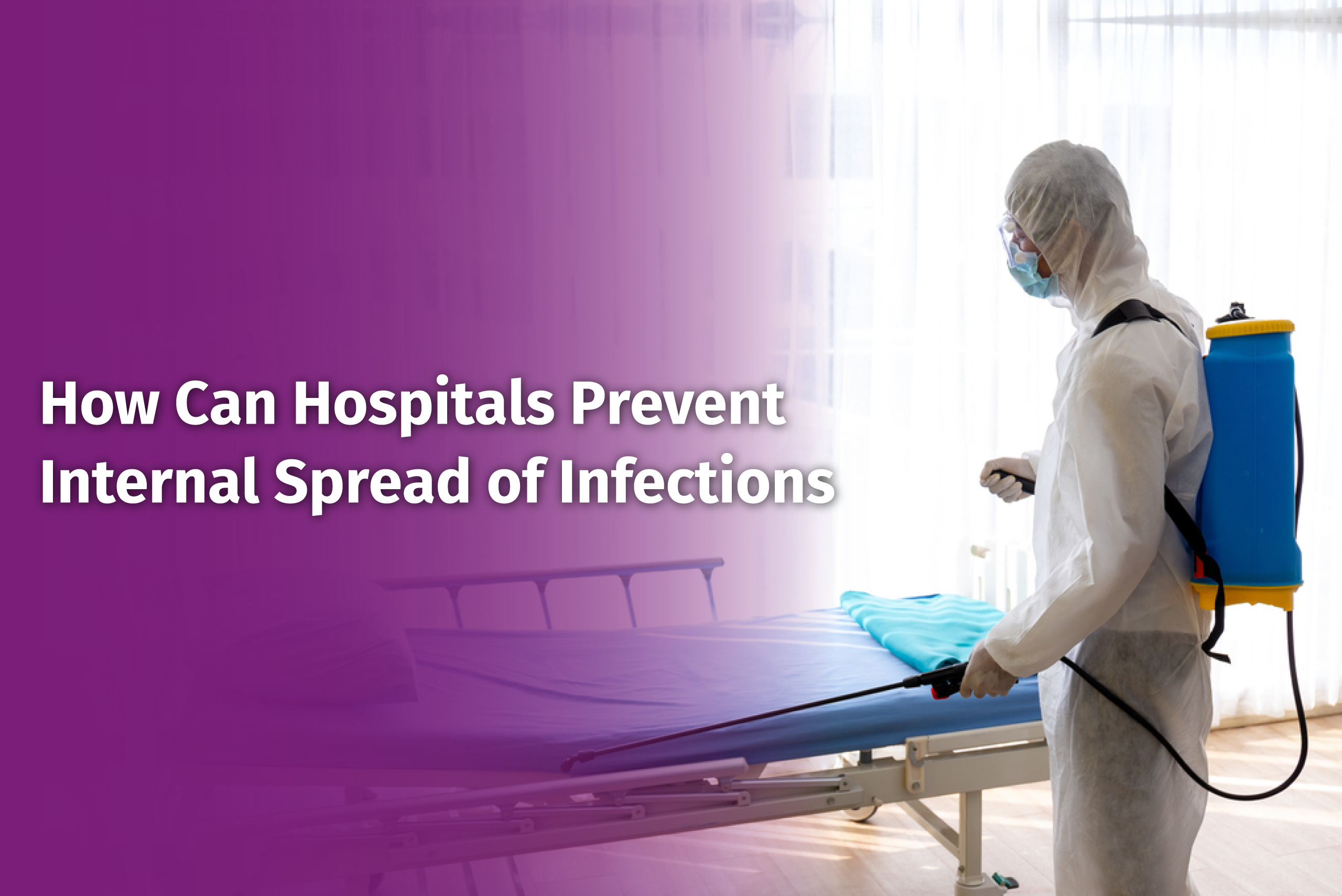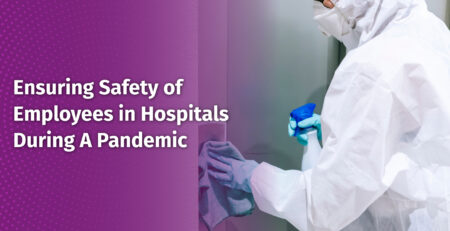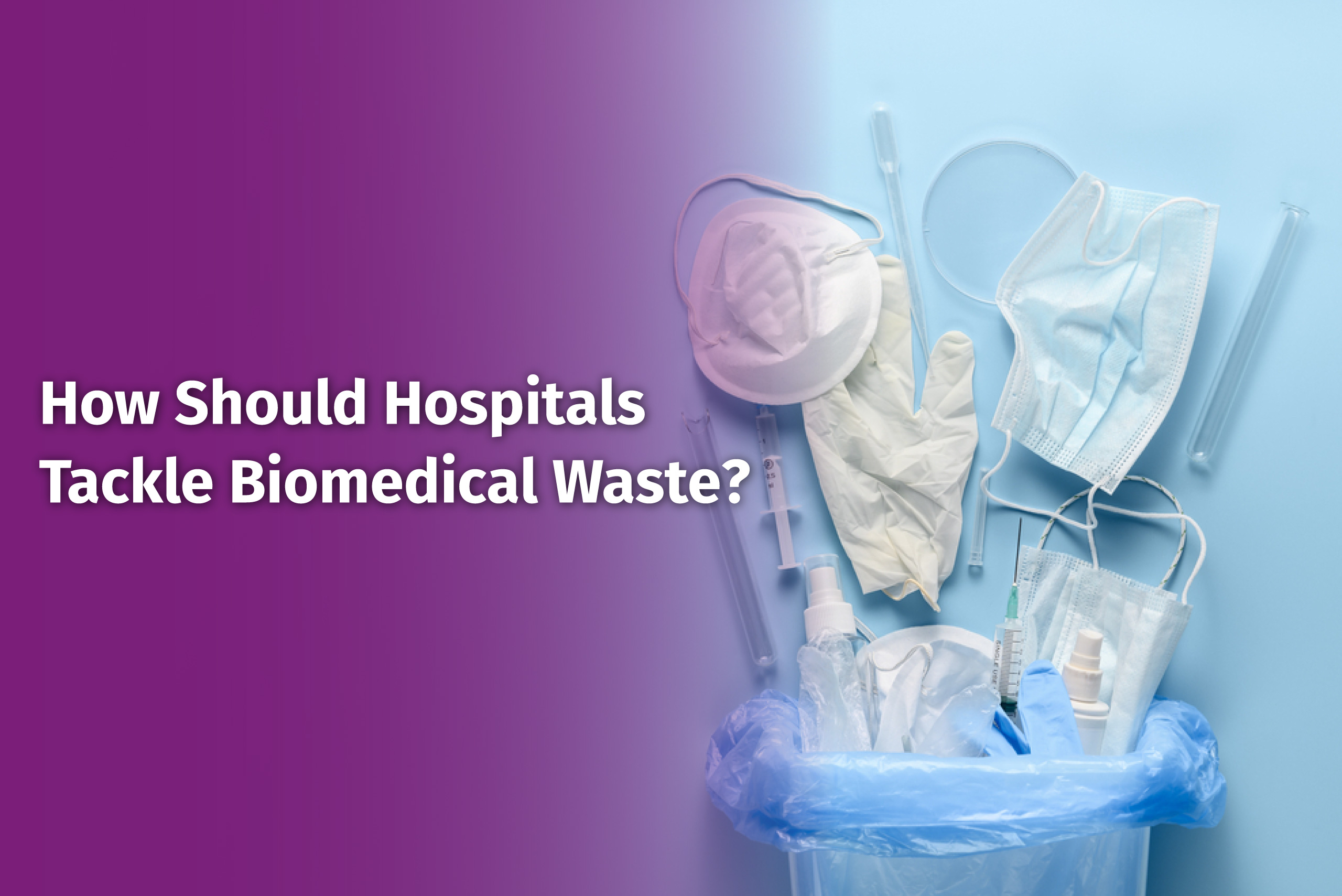Hospital-Acquired Infections (HAIs): What Are They?
Hospital Acquired Infections or HAIs are infections that patients receive during the treatment of medical or surgical conditions, out of which many are preventable. Modern medicine and invasive devices and procedures used in medical procedures such as catheters and ventilators can cause these HAIs.
HAI is a significant cause of morbidity and is associated with a substantial increase in medical costs each year. HAI affects 1 in 25 inpatients in the United States at a time, and at least 1 HAI occurs in all types of care facilities.
Types of HAIs
Hospital-acquired infections may be related to equipment used in medical procedures such as catheters and ventilators. Infections can also occur at surgical sites known as surgical site infections. There should be thorough monitoring and prevention of these infections as they pose a significant threat to patient safety.
Let us look at the various types of HAIs:
1. Central line-associated Bloodstream Infection (CLABSI)
This causes thousands of deaths and billions of additional costs to the healthcare system each year, but preventable infections. There are guidelines for the medical sector to terminate CLABSI.
Prevention
Many healthcare facilities can assess the effectiveness of preventive efforts after monitoring the CLABSI rate.
CLABSI monitoring
The patient safety component of the National Healthcare Safety Network includes monitoring methods to identify and track device-related infections, like Bloodstream infections associated with the centerline.
2. Catheter-associated Urinary Tract Infections (CAUTI)
These are Urinary tract infections (UTIs) that affect any part of the urinary system, including the urethra, ureters, bladder, and kidneys. Urinary tract infections are the most common type of medically related infection.
3. Surgical site infection (SSI)
These are infections that occur after surgery on the body where surgery has been performed. Surgical site infections can be surface infections that affect only the skin. Some surgical site infections are more severe and can harm the organs, tissues, or transplanted material under the skin.
SSI monitoring
The patient safety component of the National Healthcare Safety Network includes monitoring methods for identifying and tracking procedural infections, including Infection at the surgical site.
4. Ventilator-associated pneumonia (VAP)
This is a lung infection that affects people who use a ventilator. A helps a patient breathe by supplying oxygen through a tube to the patient’s mouth and nose.
VAP monitoring
The patient safety component of the National Healthcare Safety Network includes monitoring methods to identify and track device-related infections, including Bloodstream infections associated with the centerline.
The most common Hospital Acquired Infections (HAIs) or nosocomial infections
1. Severe Acute Respiratory Syndrome
Despite the current pandemic complications caused by coronavirus 2 (SARSCoV2), there are other infections and outbreaks caused by various microorganisms. Nosocomial diseases, also called healthcare-related infections (HAI or HCAI), are nosocomial infections that are usually absent or may be cultured on admission. These infections can appear 48 hours after admission.
2. Respiratory tract infection (pneumonia)
Pneumonia is an infection of lung tissue. It is filled with microorganisms, fluids, and inflammatory cells and affects the alveoli, which affect their normal functioning. Pneumonia is a common condition that affects eight in 1,000 people each year in the UK. It can affect people of all ages, but it can be more severe in very young and older adults.
3. Infection at the surgical site
These account for up to 20% of all treatment-related infections. At least 5% of patients undergoing surgery develop wound infections. Surgical site infections can range from spontaneously restricted wound discharge within 7-10 days after surgery to life-threatening postoperative complications such as sternum infection after open-heart surgery.
4. Sepsis / Bacteraemia
Sepsis is a clinical syndrome caused when the body’s immune and clotting systems are turned on by infections (bacteria, viruses, fungi). Sepsis is one of the leading causes of death in inpatients in the intensive care unit (ICU). Septic shock is a life-threatening condition characterized by hypotension despite adequate fluid intake, in addition to organ dysfunction and sepsis. The most common reasons for sepsis in adults are urinary tract infections, intestinal perforation, pneumonia, and severe skin infections.
5. Clostridium difficile infection (CDI)
Clostridium difficile (C. diff) is currently recognized as the leading cause of infectious diarrhea in medicine and is increasingly associated with cases of community-acquired colitis. C. diff occurs in the intestinal tract and can continue to infect contaminated surfaces for extended periods and are most resistant to disinfection.
6. Urinary tract infection
These are caused by the presence and proliferation of microorganisms in the urinary tract. Urinary tract infections include infection of the kidney and pelvis – acute and chronic pyelonephritis, infection of the bladder – cystitis, infection of the urinary tract – urinary tract inflammation, and infection of the epidermis – the epidermis. It can cause several clinical syndromes, like Prostatitis (infection of the prostate).
Factors Affecting the Onset of HAIs or Nosocomial Infections
- Microbial agents
A wide variety of bacteria, viruses, fungi, and parasites can cause nosocomial infections. Some organisms can be obtained from inanimate objects or recently contaminated substances (environmental infections) from other human sources.
- Patient susceptibility
Relevant causes are age, immune status, underlying disease, and diagnostic and therapeutic measures. Extreme life (infant and old age) is associated with reduced resistance to infection. Patients with chronic diseases such as malignancies, leukemia, diabetes, renal failure, and acquired immunodeficiency syndrome (AIDS) are more susceptible to opportunistic pathogens.
- Environmental factors
Patients hospitalized can be carriers of infectious diseases or pathogenic microorganisms. Patients infected in hospitals are also a source of infection. Severe hospital conditions, frequent patient movements from one ward to another, and the concentration of sensitive patients in one area (newborns, burns, intensive care units, etc.) contribute to nosocomial infections.
- Bacterial resistance
Widespread use of antibiotics for treatment or prevention (including topical ones) is a significant cause. Due to the widespread use of antibacterial agents, bacteria resistant to the agent will eventually emerge and spread to medical facilities. Many strains of Streptococcus pneumonia, Staphylococcus, Enterococcus, and tuberculosis are now immune to most or all of the antibacterial agents that were once effective. Multiple resistant Klebsiella and Pseudomonas aeruginosa are widespread in many hospitals.
What are the symptoms of HAIs/nosocomial infections?
Infections or toxins transmit nosocomial infections in specific locations, such as hospitals. The number of HAIs increases because of the complex medical care and increasing antibiotic resistance.
In HAI, the infection occurs:
- Up to 48 hours after admission
- Up to 3 days after discharge
- Within 30 days after surgery
Symptoms of these infections include:
- Discharge from the wound
- Heat
- Cough, shortness of breath
- Burning sensation or difficulty urinating when urinating
- Headache
- Nausea, vomiting, diarrhea
- Pain and inflammation
How to Prevent HAIs/Nosocomial infections
The responsibility for HAI prevention lies with the medical facility. Hospitals and medical professionals should follow recommended guidelines for sterilization and disinfection. Measures to prevent HAI can reduce the risk of infection by more than 70%. However, due to the nature of medical facilities, it is impossible to eliminate 100% of medical-related infections.
Some common infection control measures that everyone can take are:
- Screen the intensive care unit to see if someone with HIA needs quarantine.
- Determine the type of insulation needed to help protect others and reduce the risk of further infections.
- Adherence to hand hygiene, that is, hand washing before and after touching people in the hospital.
- Wear appropriate equipment such as gloves, gowns, and face protectors.
- Clean the surface properly at the recommended frequency.
- The room used should be adequately ventilated.
The role of hospital management in preventing and treating HAIs
Hospital and medical management must play a leading role in supporting nosocomial infection programs. Their responsibilities are:
- Establish an interdisciplinary infection control committee
- Identify suitable resources for infection control programs and apply the most appropriate infection control methods
- All staff by supporting infection control programs in disinfection and sterilization techniques
- Transfer technical aspects of hospital hygiene to appropriate personnel such as:-Nursing-Housekeeping-Maintenance-Clinical Microbiology Institute
- In-hospital infection status and Regularly review the effectiveness of measures to contain the infection
- Review, approve and implement policies approved by the infection control committee
- If the infection control team is authorized to assign appropriate program functions
Conclusion
Hospital-acquired infections occur when a person gets an infection in a medical facility. Infections that occur after hospitalization must meet specific criteria to be considered HAI. These harmful infections can result from poor adherence to cleaning protocols, hand hygiene, or failure to use alternative interventions such as automatic disinfection techniques. One of the proposed solutions that combine manual cleaning with hydrogen peroxide vapor technology is for the hospitals to take full responsibility for preventing and getting rid of HAIs completely.
References;
https://emedicine.medscape.com/article/967022-overview#:~:text=Hospital%2Dacquired%20infections%20are%20caused,surgical%20site%20infection%20(SSI).
https://www.ncbi.nlm.nih.gov/books/NBK441857/
https://www.cdc.gov/hai/infectiontypes.html
https://www.healthline.com/health/hospital-acquired-nosocomial-infections
https://inivos.com/blog/5-most-common-hospital-acquired-infections-hais/
https://www.who.int/csr/resources/publications/whocdscsreph200212.pdf


